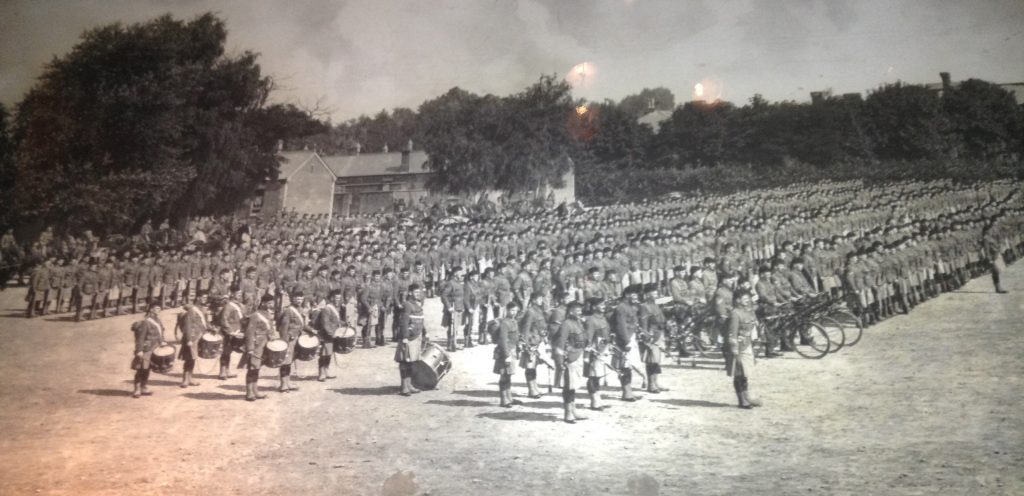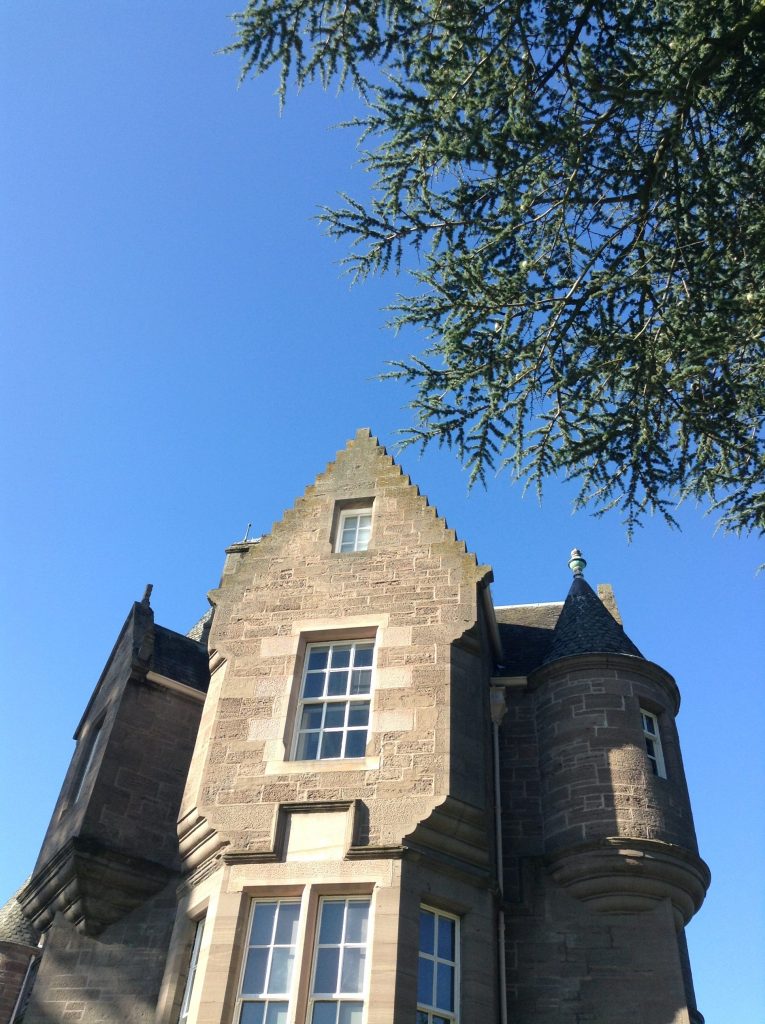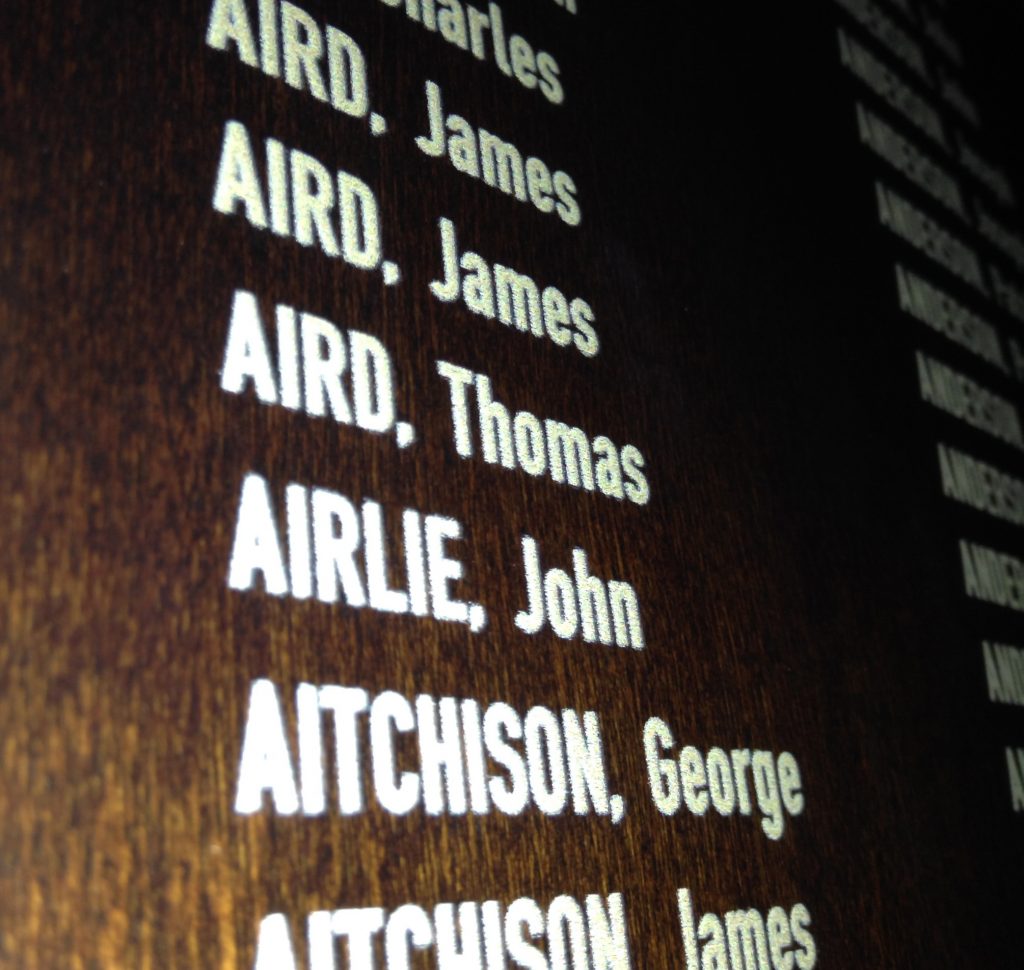When war began in August 1914, whilst most of RBGE’s male staff were joining the Royal Scots and the Cameron Highlanders, two of our staff members enlisted in the Black Watch. Based in Perth, and with origins that can be traced back as far as 1725, the Black Watch had the reputation of producing particularly ferocious soldiers, each having the honour of wearing the red hackle on their tam o’shanters.
The two men in question are Thomas Aird, who joined the 11th Battalion of the Black Watch on the 16th November 1914 and Thomas Young who enlisted in the 1st Battalion Black Watch on the 5th August 1914 – a day after war was declared.
Unfortunately neither of these men have left many records, nor records easily attached to themselves, but we’ve been able to piece some pieces of information together, mostly thanks to help received at the excellent Black Watch Museum in Perth and researcher Garry Ketchen, who I’m again grateful to for allowing me to use his genealogical research.
Thomas Aird’s name appears on the RBGE War Memorial, so we know he numbers amongst RBGE’s 20 members of staff at the start of the war that were killed, but his date of death for some reason was not recorded on our Service Roll. During a visit to the Black Watch museum we discovered his name, his service number (S/6773) and the information that he was killed in action on the 3rd March 1917. Garry Ketchen, who has researched the men appearing on the RBGE War Memorial, also discovered this information along with the fact that Aird was born on the 25th July 1878 to Hamilton and Agnes Aird in Kirkmichael or Kirkconnel, Ayrshire. He also discovered that Aird was employed as a colliery fireman before he began work at RBGE on the 11th May 1914 as a Labourer. Although Aird enlisted with the 11th Battalion of the Black Watch, one of the new battalions set up in October 1914 to take the huge numbers of new recruits joining in the early months of the War, it soon became a reserve battalion with members being sent to bolster others on the Western Front. It appears Aird was transferred to the 1st Battalion in January 1916 after completing his training. He therefore would have been active in the Battle of the Somme which began in July of that year. We know from RBGE records that he was wounded once.
By looking at the Battalion diaries available on Ancestry.com we can see where Aird was when he was killed. The Battle of the Somme was still raging at the time and the 1st Black Watch were to the south of the river. On the 3rd March they moved from Assevillers to huts and billets at Chuignolles. Prior to this they had been spending short periods on the front line and in training, staying nearby to offer support when needed. There was no mention of any action or death on the 3rd March, only a tally at the end of the month: 1 Officer wounded, 17 O.R. [Ordinary Ranks] ditto, 2 O.R. died of wounds and 3 O.R. killed. Aird’s pension records show that he was killed in action, so presumably he was one of the last three, probably in the wrong place at the wrong time.
Thomas Young, on the other hand, survived the war. We know he joined RBGE on the 24th April 1914 as a Patrolman (presumably a cross between a policeman and a security guard) and was immediately called up to Aldershot to join the 1st Battalion of the Black Watch becoming one of the first soldiers to cross the English Channel as part of the British Expeditionary Forces, all of this hinting at a previous spell in the army. He would have been involved in many of the major battles of the First World War including Mons, Ypres, Loos, the Somme, Passchendaele and finally the storming of the Hindenburg Line at the end of the War. At the Black Watch Museum I was made aware of the Black Watch’s history, written by Major-General A.G. Wauchope. In it on page 100 is a list of 30 men who were part of the 1st Battalion mustered at Aldershot at the beginning of the War and who were still in the 1st Battalion when the war ended in November 1918. The name Private Thomas Young is on that list, and it may well be that he is RBGE’s Thomas Young, in which case the Black Watch Museum know that he had originally joined in 1905 and would indeed still have been on reserve in 1914. I was shown an image of the 1st Battalion at Aldershot as they were about to depart – Thomas Young would have been one of those many men and it was sobering to think that just 30 of them were still in the same battalion for the Armistice (although reserves continually bolstered the battalion of course). At present we know nothing more about Thomas Young. He did not return to RBGE after he was demobilised on the 22nd February 1919.

Photo of the 1st Black Watch in Aldershot, August 1914, with kind permission from the Black Watch Museum.
We can look at the 1st Battalion diary for the end of the War though, and get a sense of the atmosphere at the time the men of the 1st Black Watch were being demobilised. Major Fowler was the one Officer also present on the list of 30 men surviving in the 1st Battalion from the beginning to the end of the War:
“On the 24th [February] Maj. And Q[uartermaster] W. Fowler M.C. left the Battalion to proceed for duty at Bisley. After over 35 years service in the Regiment, and continuous service, without a break with the Battalion throughout the war, his departure was a matter of great regret to everyone, and the high esteem in which he was held by all was impressed by the voluntary turn out of the Battalion to escort him to the station. Both the Pipe and Brass Bands were in attendance. On reaching the station, the Brass Band played ‘Auld Lang Syne’, after which Major Fowler addressed the Battalion and said good-bye. As the train moved out of the station, the pipers played ‘Scotland the Brave’, accompanied by much cheering.” wrote Lt. Col. J. Anderson.
We can also read the farewell given to the men by Brigadier General L.L. Wheatley when the 1st Infantry Brigade was disbanded on the 25th March 1919:
To Brigade Headquarters, 1st Battalion The Black Watch, 1st Battalion Royal North Lancashire Regiment, 1st Battalion The Cameron Highlanders, and the 1st Trench Mortar Battery. “The Brigade is about to break up. For your loyalty in the past I thank you, for the present I say Good-bye, and for the future I wish you good luck. It has been the proudest six months of my military service to have had the honour to command you.”
With thanks again to Garry Ketchen and to Richard McKenzie at the Black Watch Museum.



